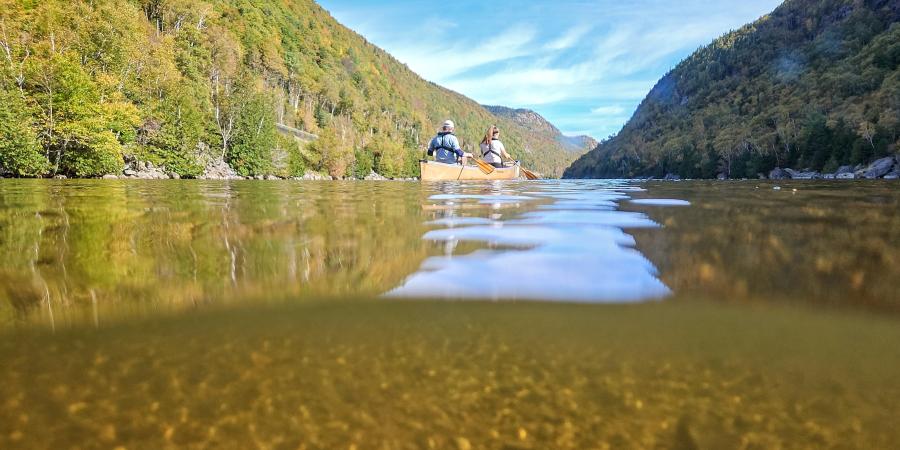As the threats and inputs to Adirondack lake ecosystems have evolved, the ways we study these systems have too. Since acid deposition was the primary stressor of the last 50 years, research questions which guided monitoring programs focused heavily on the ionic make-up of lakes, and how elements such as aluminum were impacting biological communities. This monitoring approach provided excellent insight into the acid-base chemistry of Adirondack lakes but lacked many of the measurements necessary to understand the impacts of climate and other stressors.
This year, AFC staff will begin the first official field season of SCALE, or the Survey of Climate and Adirondack Lake Ecosystems. SCALE will build upon the legacy of the 1984 Adirondack Lakes Survey, the Adirondack Long-term Monitoring Program, and other acidification focused studies, leveraging the latest technological advances for detecting climatic variables. Newly available methods offer insightful complements to traditional manual survey techniques, requiring fewer survey sites while enhancing understanding of the major drivers of changes across the region over time. Many of the parameters which were vital to understanding acid deposition, such as pH, nutrients, metals, and dissolved organic carbon, will continue to be collected under SCALE. These chemical indicators, in combination with an expanded suite of analysis focused on climatic variables, will provide the most comprehensive view of Adirondack lake chemistry to date.
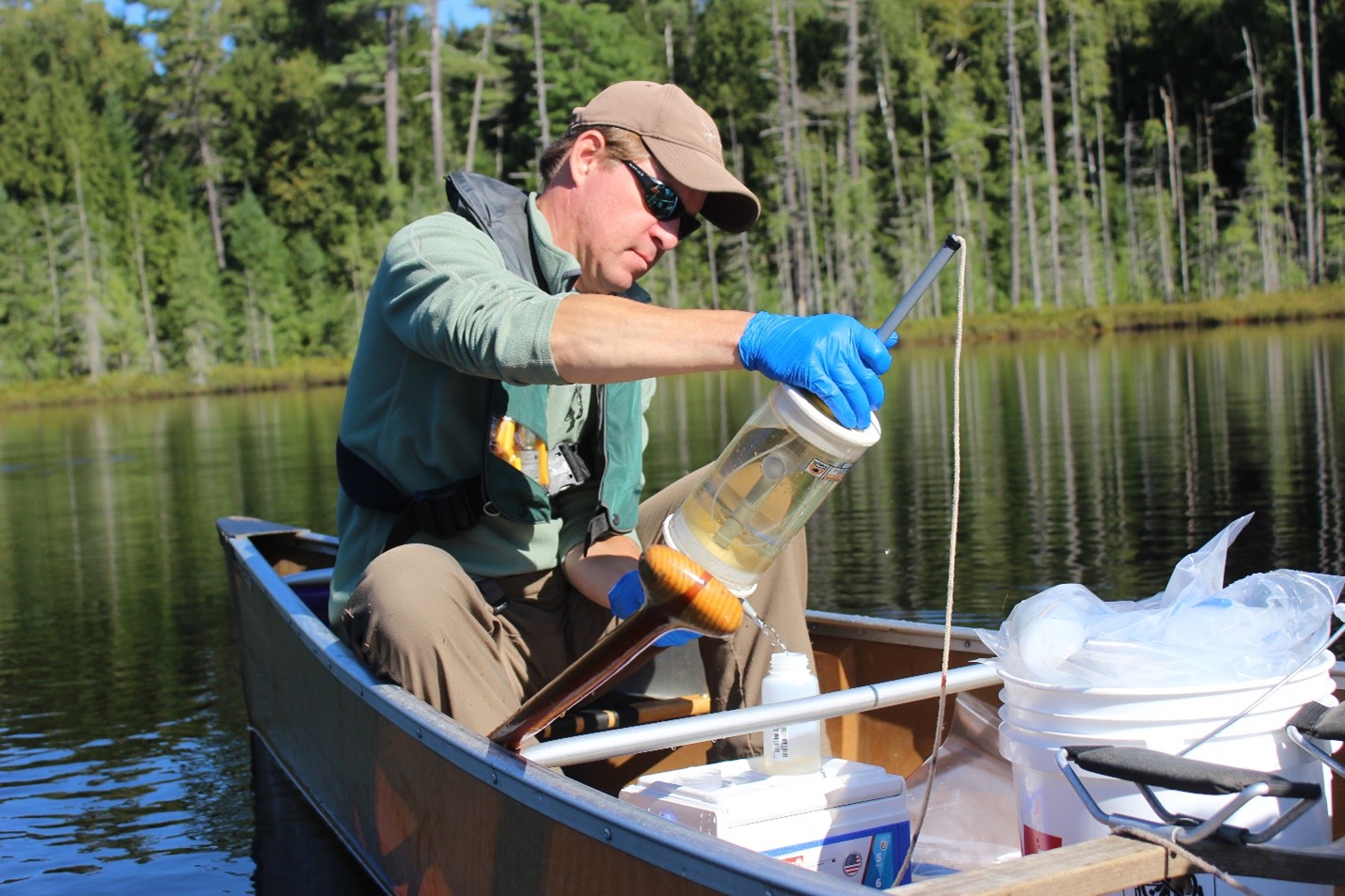
Water Quality Research Manager Phil Snyder using a Kemmerer to sample an Adirondack lake. Photo: Justin Levine
Dissolved Oxygen and Temperature
Dissolved oxygen and temperature represent two of the most important characteristics of inland waters. All complex life requires oxygen, and rates of all biological processes depend upon temperature. Additionally, dissolved oxygen regulates characteristics such as habitat suitability for biota, nutrient cycling, and metal toxicity. Dissolved oxygen is also sensitive to variations in temperature that govern the mixing of lake waters. Recent studies indicate that average summer oxygen levels are declining in temperate lakes across the world. Warmer temperatures lead to less oxygen solubility in lake water closer to the surface, and this has been well studied in relation to climatic changes. However, much remains unknown about the factors contributing to deoxygenation in deep water, where temperatures have not consistently warmed in recent decades.
Tracking temperature across depths throughout the year in a subset of Adirondack lakes can enable calibration and validation of models that predict rates of warming and shifts in mixing patterns arising from a warming climate. Monitoring these shifts is critical to understanding other climate effects that are mediated by thermal changes, such as variations in dissolved oxygen, species distributions, carbon emissions, and harmful algal blooms.
SCALE research will incorporate two strategies in the monitoring of temperature and oxygen. The first will be to for Ausable Freshwater Center (AFC) field teams to deploy monitoring buoys with high frequency sensors across 20 lakes; these will provide continuous year-round data and enable us to understand the seasonal evolution of anoxia , or the depletion of deep-water oxygen, in Adirondack lakes. The second will involve AFC field teams conducting manual profiles of temperature and dissolved oxygen in up to 300 lakes during the summer season to gain a broader perspective on the extent of deep-water anoxia which may be occurring.
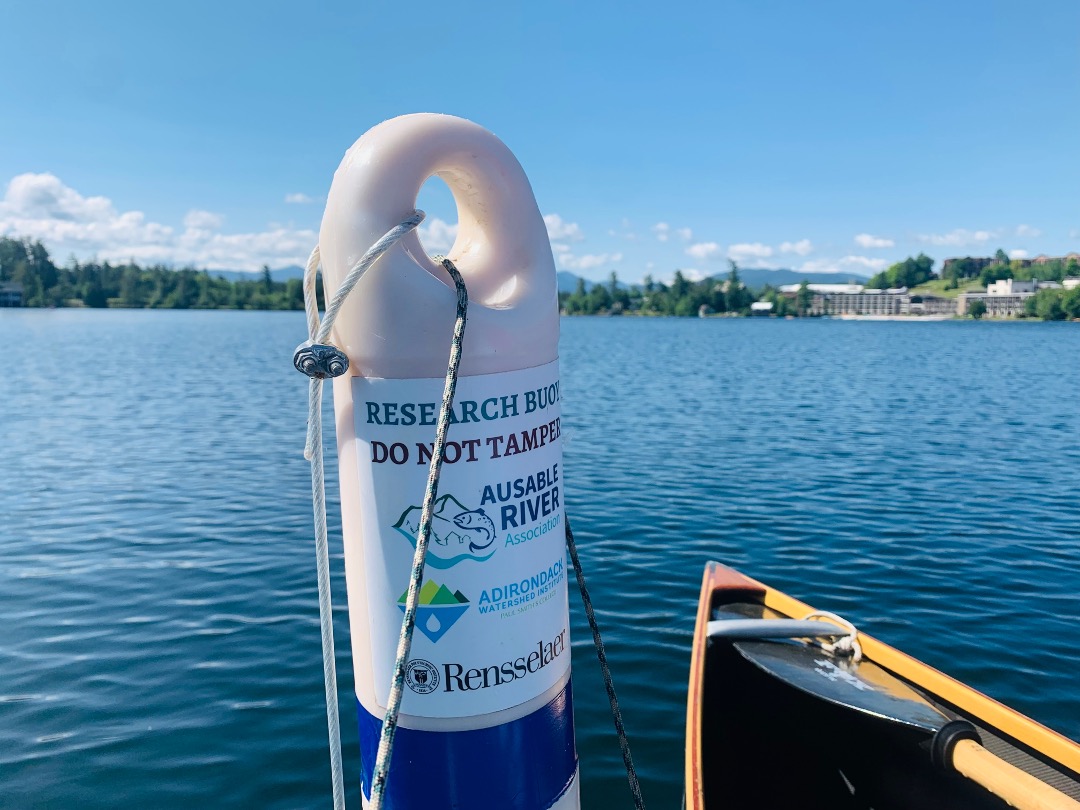
Beginning in spring 2025, AFC field teams will be placing research buoys on 20 Adriondack lakes to continuously monitor dissolved oxygen and other parameters throughout the water column.
Support our water quality work for clean water and healthy streams. Give with confidence today!
Greenhouse Gases
Inland waters are an important component of the earth’s carbon cycle. Globally, lakes contribute almost as much carbon dioxide to the atmosphere as the world’s oceans. Lakes are also globally important hotspots of carbon burial, acting as carbon sinks. In addition, lakes can serve as important emission sources of other greenhouse gases, such as methane and nitrous oxide.
Field teams from AFC will use novel techniques and greenhouse gas analyzers to measure dissolved gases from a wide range of lakes and depths. Data from these efforts will be interpreted by partners at Rensselaer Polytechnic Institute (RPI). Combined with the data from profiles of temperature and oxygen, these will allow calculation and estimates of carbon cycling and lake metabolism.
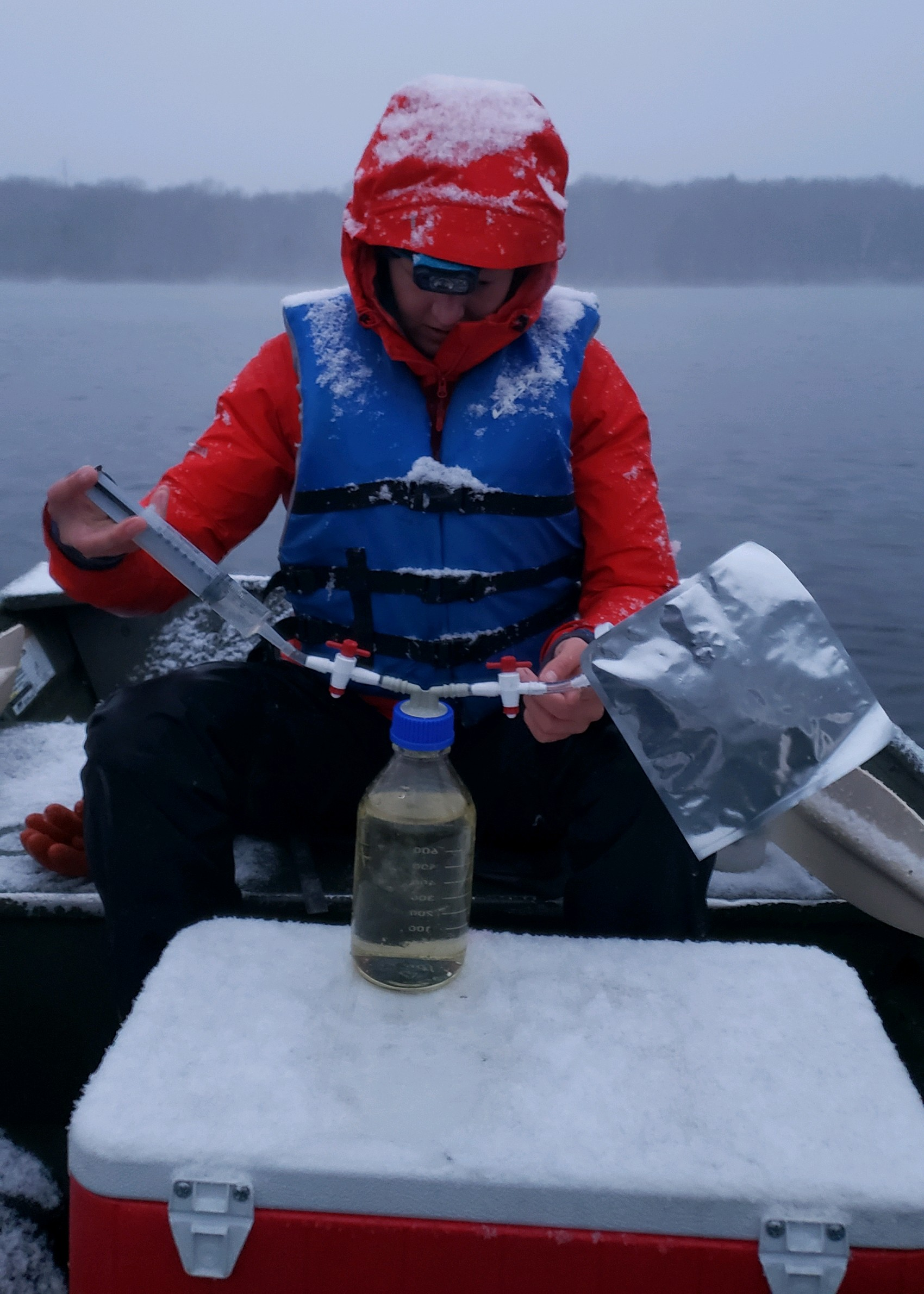
One of our partners from RPI using the headspace technique to sample dissolved gases at various depths of a lake. AFC field teams will use the same method of sampling on SCALE lakes in the Adirondacks. Photo: Jenna Robinson
Dissolved Organic Carbon
One of the key effects of acid deposition in Adirondack lakes was a reduction in the mobility of dissolved organic carbon (DOC) in forest floors and the input into lakes. As acid rain has subsided, in combination with a warming climate and increases in precipitation, DOC concentrations and water color are increasing, a phenomenon known as browning. This “browning” has important physical, chemical and biological repercussions for aquatic ecosystems, biological community structures, and aquatic productivity. DOC affects light attenuation, oxygen and nutrient availability, and consequently the development of thermal stratification and hypoxia, as well as species distributions and habitat availability.
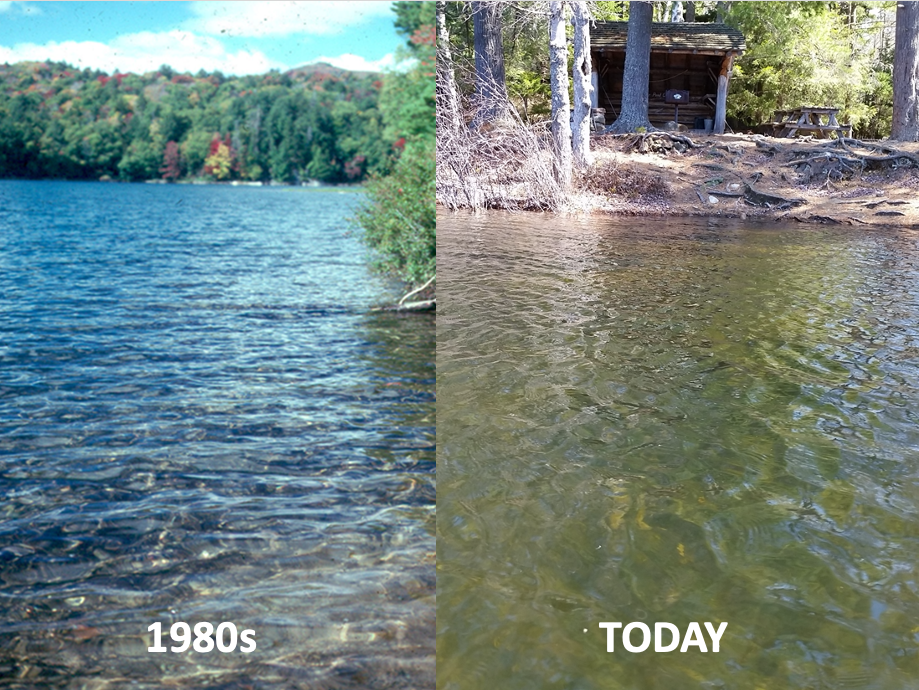
In the 1980s Bear Pond in the St. Regis Canoe Area had crystal clear water due to acidification. As the lake has recovered from acidification it has browned. Photo: Curt Stager
AFC field teams will collect water samples for DOC analysis from all sites to examine factors controlling the concentration and rate of change in Adirondack lakes. This data will then be used by partners at CUNY City Tech to create models that would allow the use of remote sensing to project patterns of DOC concentration and its change in a larger number of Adirondack lakes. Data will also be interpreted by partners at Syracuse University to examine how different inputs from the surrounding landscape have changed over time, while researchers at Cornell and RPI will look at how DOC affects biota and lake chemistry.
Beyond the Survey
The large amount of data generated by SCALE has the potential to fuel insights for many years though modeling projections. Ecosystem models can be coupled with models of internal lake cycling that predict future changes in characteristics such as dissolved oxygen, water clarity, or carbon emissions and burial. Further analysis can then explore the implications of various management decisions. Combined with remote sensing, modeling tools will increase the understanding of the sensitivity of Adirondack waters to climate, even in lakes that have not yet been surveyed.
As was the case with the surveys and modeling programs that strove to understand and mitigate the threat to Adirondack lakes from acid deposition, the climate-focused data from SCALE may reveal new insights well into the future.
Story by Phil Snyder, Water Quality Research Manager.
Sign-up for our e-newsletter to get weekly updates on the latest stories from the Ausable Freshwater Center.
